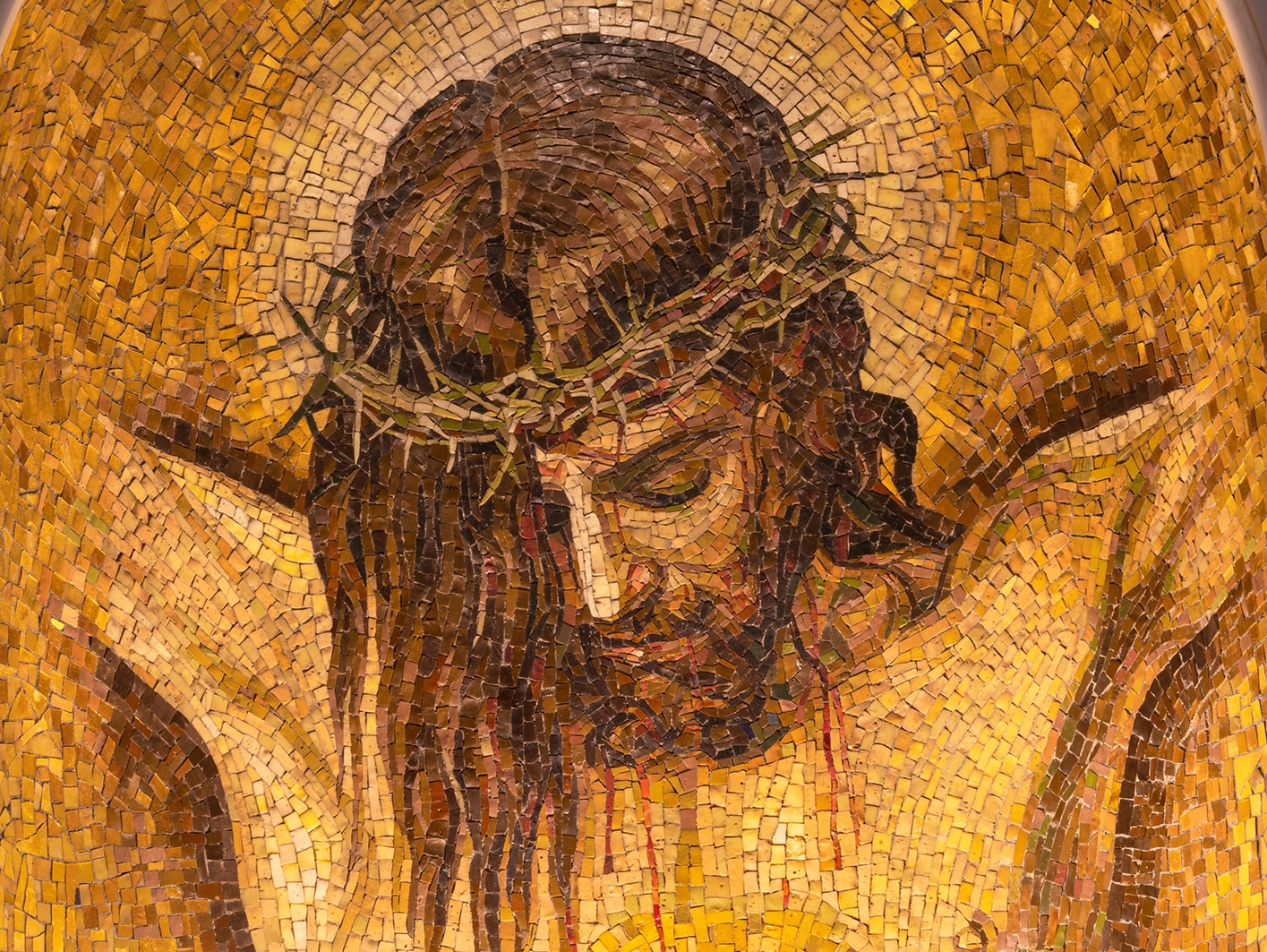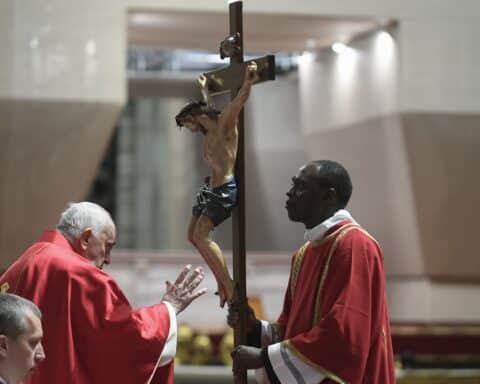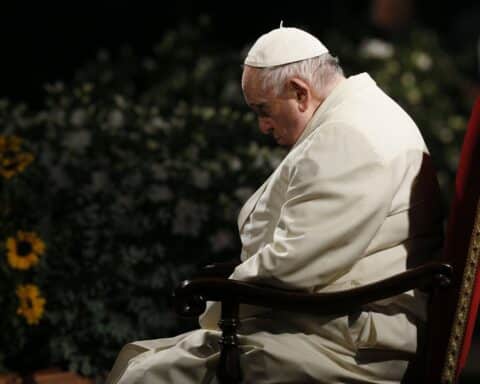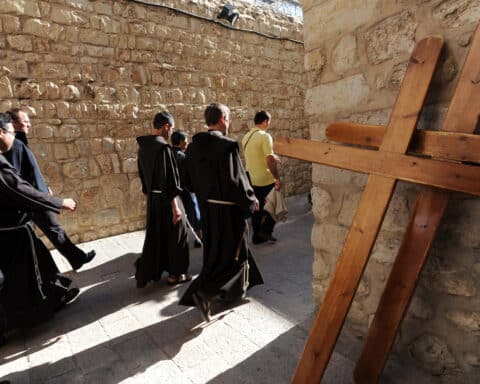According to the Gospel of John, in his final moment on the cross, Jesus declared: “It is finished” (Jn 19:30). The word might also be translated: “It is fulfilled”; or “It is accomplished”; or “It is completed.” Like the declaration of his thirst, the saying is brief but contains many layers of meaning. One can uncover the layers by asking a simple question. Exactly, what was fulfilled, accomplished or completed on the cross?
“It is finished.” (Jn 19:30)
The Sixth Last Word
The cross of Jesus Christ is the greatest work of love the world has ever known. It was a generous gift of love for God to create the world, but for God to save the world by dying on the cross for us shows his love still more. It was generous for God to give being to all things, and generous to give being to humans made in his image and likeness. It was even more generous for him to give grace to the first human beings and establish them in the wonderful state of original justice. But it was not enough for God to give us the world. In his love and mercy, God wanted to give us something more.
So, in his eternal wisdom, God planted a tree at the center of the garden and warned the first human beings not to eat of it lest they would die (cf. Gn 3:3). Transgression carried with it the penalty of death for them, as well as for all their descendants — not just any death — but permanent death. We might call it “Death” with a capital “D.”
What was God to do?
Once the first humans ate of the tree, what was the good God to do? Was he to go back on his word forbidding them to eat of the fruit lest they die? Or was he to stand aloof and simply watch humanity disintegrate in Death? Would sin and Death be the last word on creation? On the contrary, knowing full well from all eternity that the first human beings would transgress the law, eat the forbidden fruit and bring down the penalty of Death upon all humanity, the good God who loves us had already devised a plan to save us — a most astonishing plan.
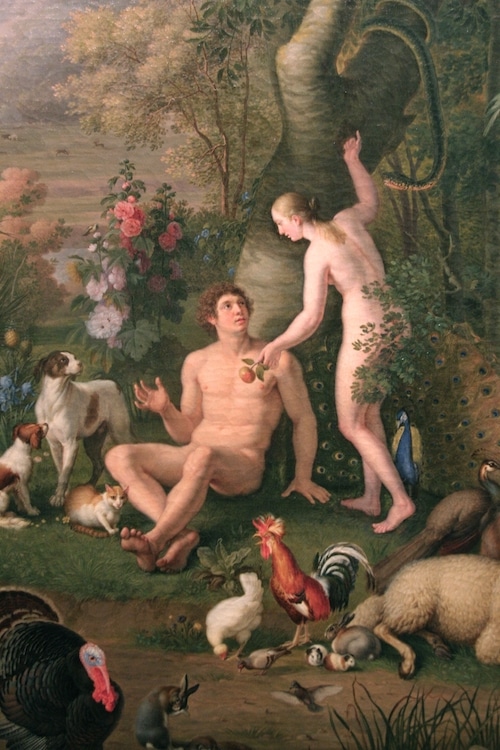
Knowing the first humans would transgress, God planned to send his eternal Son to become a man to die on behalf of us all. The plan was for the eternal Son, incarnate as Jesus of Nazareth, to go to the cross with a specific intention in his heart. His intention would be to bear in himself, yet on behalf of all, the penalty of Death coming to all on account of sin. In this way, rather than go back on his original word announcing Death to humanity for eating the forbidden fruit, God himself would bear the penalty of Death on behalf of man. In this way, God would demonstrate his incomprehensible love. He would show us a love willing not only to create us but also to die for us.
Revealed in Scripture
The plan of God to die for us comes to light over the whole course of Scripture. The Old Testament foretells of the suffering servant in Isaiah 53 (and elsewhere). The Psalms, too, foretell of the suffering servant in Psalms 22, 69 and 88 — just to name a few. The ministry and sufferings of the prophet Jeremiah are one long prefiguration of the suffering Christ. So, too, is the mysterious figure of Job.
The revelation of the eternal plan continues in the New Testament. The prophet Simeon tells the Virgin Mary that her son was destined for contradiction (cf. Lk 2:34-35). One of the three gifts from the Magi is myrrh (cf. Mt 2:11). Myrrh is a prefiguration of the death of the Lord since in the ancient world myrrh was used as an embalming fluid. The baptism of the Lord and his temptations in the desert was also a prefiguration of his passion. Jesus even prophesied his own passion and death more than once (cf. Mk 8:31, 9:31, Mt 16:21, 17:12, 17:23, etc.). To make clear that his Passion and death were not going to be something that simply happened to him, the Lord tells us explicitly he would freely lay down his life: “No one takes it [my life] from me, but I lay it down of my own accord. I have power to lay it down and power to take it up again; this charge I have received from my Father” (Jn 10:17-18, RSV). Many times in his public ministry Jesus escaped from crowds that wanted to kill him (cf. Lk 4:16-30). In the Garden of Gethsemane, however, he chose not to escape. He chose to endure the cross for us all. He chose to do so according to the eternal plan of Love.
Now fulfilled
Returning to the main question, when the Lord Jesus said, “It is finished,” exactly what was fulfilled, accomplished or completed? What was fulfilled was the eternal plan of God to send his Son to die on the cross on behalf of us all. What had been planned in eternity was now fulfilled in time. What was fulfilled, too, were all the prefigurations and prophecies of the Old Testament about his saving death. What was fulfilled were also Simeon’s prophecy to Mary, the sign of the myrrh from the Magi, and the Lord’s own prophetic announcements of his passion and death.
What was fulfilled was his priestly sacrifice of himself on behalf of sinners. What was fulfilled was his divine and human purpose to die for us all out of love. What was fulfilled was the plan for the eternal Son of God now to enter into the state of Death. Hence, immediately after saying, “It is finished,” he bowed his head, gave up his spirit and died.
Death destroyed
His purpose in entering into the state of Death was precisely to destroy it. Death is in principle a permanent condition except for one thing. Jesus Christ had the power to break it. Previously, many people had come back from the dead, but all of them died once more.
On Easter Sunday, however, when Jesus Christ came back from the dead, now he lives to die no more (cf. Rv 1:18). In doing so, he broke the power of Death. He removed its sting — its permanence. He destroyed Death itself as a permanent condition. Now, as a result of his victory, no human being any longer enters into Death as a permanent condition. Rather, thanks to the victory of Jesus, human death is now merely a temporary condition. The New Testament compares it to falling asleep. In the end, on the last day, every human body that ever has been will rise from the dustbin of history by the power of God. It will be the moment of truth for the whole of historical humanity — the whole Adam. At that moment, traditionally called the general judgment, God shall render to all human beings of all times and places according as their deeds deserve (cf. Rom 2:6; Rv 22:12).
How have I loved?
In the meantime, how then shall we live? How shall we prepare?
First, let us remember that Christ died for us, yet God has raised him from the dead. Jesus lives now on high, and he breathes his Holy Spirit upon us. He calls us to turn to him for forgiveness and new life. He awaits our appeal for his merciful love. He is eager to show it to all who ask.
Let us also remember the words of St. John of the Cross: “At the evening of life, we will be judged on our love” (Catechism of the Catholic Church, No 1022). With that truth in mind, a succinct summary of Matthew 25, let us examine our consciences. How have I loved? How have I loved God? How have I loved my neighbor? How have I loved myself?

When we find ourselves weighed down with sin, let us fly to the Sacrament of Penance. For through that great sacrament, the blood of Jesus washes away our sins once more. When we come forth from the sacrament of mercy, let us devote ourselves to prayer, fasting and almsgiving according to the grace and state given to each. Lent is a yearly reminder of the need for these three practices, not just during Lent, but all year round.
In this way, through faith and hope in the Lord Jesus Christ, through recourse to his merciful love in the Sacrament of Penance, and through a life of prayer, fasting and almsgiving, you and I shall be prepared for the last day. Only on that day, we shall see at last the full meaning of the word: “it is finished.”

